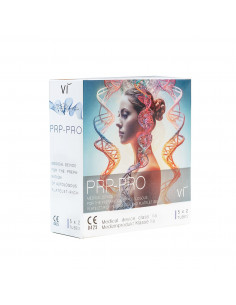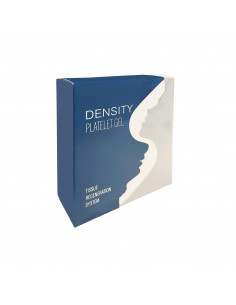Although PRP is already being used and studied in many medical fields (orthopaedics, dermatology, sports medicine), the evidence for PRP in liver diseases is still in its infancy. However, there are a growing number of preclinical studies and initial clinical experience reports that paint a cautious picture.
Several papers in rats and mice provide proof-of-concept data. For example, an Iranian research group studied PRP in rats with CCl_4-induced liver injury (a common fibrosis model). They found that PRP was not toxic to the liver and mitigated the damage caused by CCl_4 pmc.ncbi.nlm.nih.gov. Specifically, liver enzymes were lower in the PRP group, tissue showed less necrosis and fatty changes, and oxidative stress markers were reduced pmc.ncbi.nlm.nih.gov | pmc.ncbi.nlm.nih.gov.
Another study (Shoieb et al. 2018) using a thioacetamide fibrosis model reported that PRP improved liver histology and suppressed the fibrotic and inflammatory response asmj.journals.ekb.eg.
PRP-treated animals had higher antioxidant capacities and less inflammatory cytokines in the tissue. Another interesting finding was that PRP reduced the expression of pro-apoptotic genes, meaning that fewer liver cells died asmj.journals.ekb.eg. This is important because every cell death avoided is a gain for regeneration. Overall, these animal data suggest that PRP has a multi-factorial positive effect on the damaged liver: less inflammation, less fibrosis, less cell death and a tendency towards more regeneration.
A highly topical approach is the use of PRP-derived extracellular vesicles (PRP-EVs), i.e. the exosomes/microvesicles obtained from PRP that transport the decisive factors. in 2024, a Japanese working group led by Maeda et al. published a study in which mice with cirrhosis were injected with these PRP-EVs. The results were remarkable: cirrhosis improved in the animal model, as measured by a lower degree of fibrosis and improved liver values pmc.ncbi.nlm.nih.gov. Mechanistically, they showed that the PRP vesicles upregulated regenerative genes (e.g. albumin, VEGF) and downregulated TGF-β1, and also polarized macrophages towards M2 pmc.ncbi.nlm.nih.gov | pmc.ncbi.nlm.nih.gov. The authors conclude that PRP-EVs contribute to hepatocyte proliferation, anti-inflammation and anti-fibrosis and thus represent a novel therapeutic pathway for cirrhosis pmc.ncbi.nlm.nih.gov. This study emphasizes the previously explained mechanisms using state-of-the-art molecular methods.
There is very little data on human patients to date. Worth mentioning is the aforementioned pilot study from Japan (Maruyama et al.), in which 10 patients with chronic liver disease and cirrhosis received weekly platelet transfusions. After 12 weeks, there was a significant improvement in serum albumin and cholinesterase (an enzyme produced by the liver) jstage.jst.go.jp | jstage.jst.go.jpwhich indicates better liver function. Fibrosis markers such as hyaluronic acid tended to decrease jstage.jst.go.jp. However, mild side effects also occurred (itching, urticaria in some patients due to the foreign transfusion) jstage.jst.go.jp | jstage.jst.go.jp. Since PRP is autologous, such immunological side effects would not be expected. The authors were positive about the results, but emphasized that this was a small, uncontrolled study.
Another clinical publication (Polukarova et al. 2019) looked at the feasibility of PRP in cirrhosis patients. They prepared PRP from the blood of 12 cirrhosis patients and analyzed the platelet counts. As mentioned, the yield was limited - on average, the platelet concentration could only be increased 2.4-fold (compared to ~3.3-fold in healthy individuals) apcz.umk.pl.
They came to the conclusion that autologous PRP cannot achieve the necessary "dose" to be effective in cases of pronounced thrombocytopenia in cirrhosis apcz.umk.pl, and called for improvements in PRP collection (possibly larger blood volumes, other preparation methods). This finding calls for caution: the patients to be treated often have precisely the parameters that make PRP difficult (few and weak platelets).
As far as can be seen, there are currently no major clinical studies on PRP injections for chronic liver fibrosis/cirrhosis. However, there are case reports in congress abstracts where, for example, PRP has been used in individual patients with fatty liver, but without publication of detailed results. The overlap with other regenerative therapies (such as stem cell therapy) is also being investigated; one paper showed, for example, that the combination of mesenchymal stem cells with PRP could have a synergistic effect in an animal model, while PRP alone had no statistically significant effect pubmed.ncbi.nlm.nih.gov | mdpi.com - This makes it clear that the effect strength of PRP alone may be moderate and that there is more potential in combinations.
Overall, the status can be summarized as follows: Preclinical evidence supports the use of PRP for liver injury, with consistent evidence of protective, antifibrotic and regenerative effects in animal models pmc.ncbi.nlm.nih.gov | asmj.journals.ekb.eg.
Clinical data on humans is still very limited and in some cases contradictory, meaning that no reliable statements can be made regarding efficacy. However, there is cautious curiosity among experts. In view of the great need for new therapies (e.g. against NASH or to prevent transplants), there is great interest in further researching PRP in studies. The first steps could be controlled studies in patients with moderate fibrosis to test safety, feasibility and preliminary efficacy.












